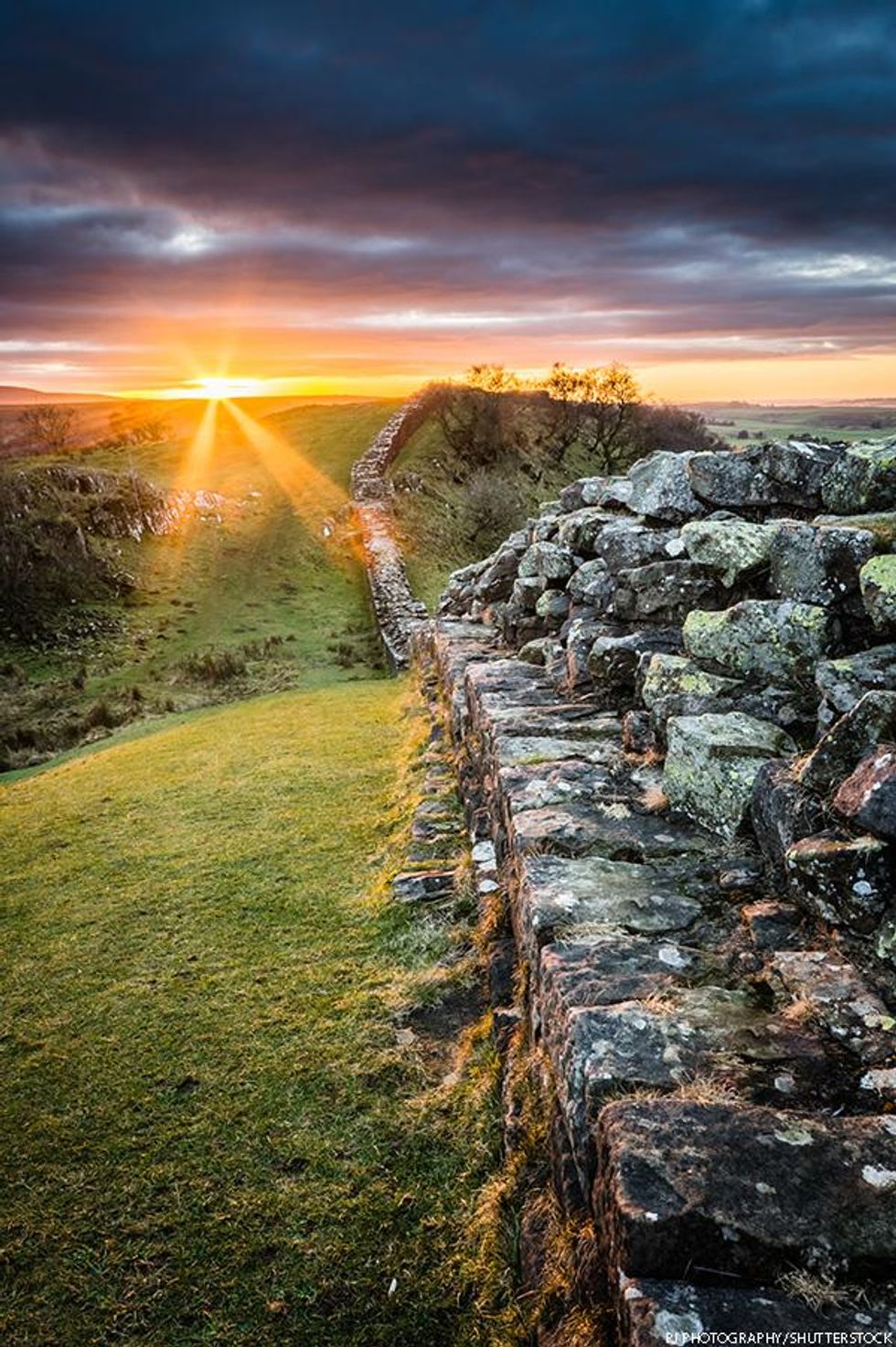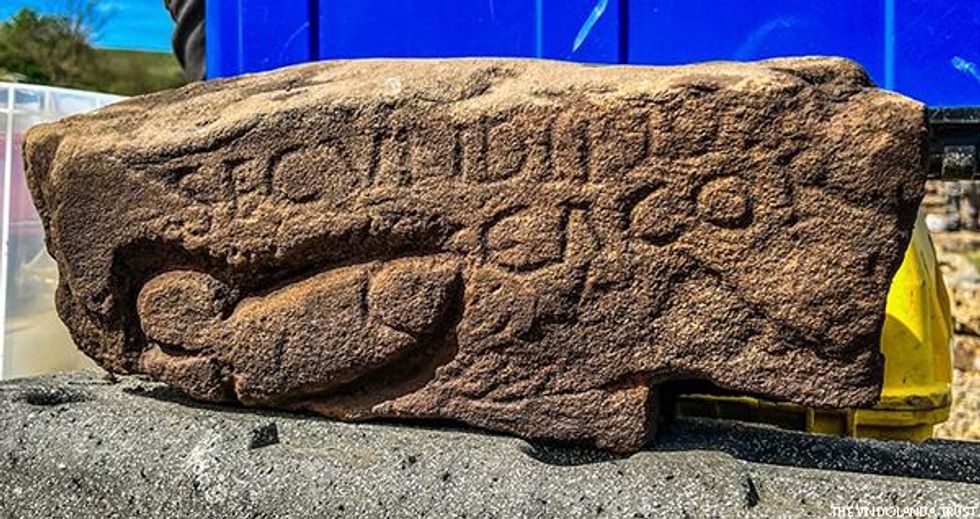Destinations
Why Hadrian’s Wall is a Roman Penis Wonderland

A recent find at the archeological landmark in England highlights the Roman obsession with recreating the male member.
December 16 2022 6:00 AM EST
By continuing to use our site, you agree to our Privacy Policy and Terms of Use.

A recent find at the archeological landmark in England highlights the Roman obsession with recreating the male member.
In the second century of the common era, the Romans constructed a stone wall that ran the width of what is now northern England. Hadrian’s Wall was 73 miles long and separated the Roman colony of Britannia in the south from the north. The wall was staffed by large garrisons of soldiers and their attending tradesfolk, merchants, and even families at forts like Vindolanda near Hexham.

Vindolanda and nearby Hadrian’s Wall have produced a treasure trove of artifacts from the era of Roman occupation, including a rare collection of mundane notes.
Dr Andrew Birley is the chief executive officer and director of excavations for the Vindolanda Trust, and oversees the excavation and preservation of the Vindolanda site. He tells Out Traveler via email the written artifacts, known collectively as the Vindolanda tablets, “are not the great histories of monarchs or national leaders,” but instead are handwritten notes saying things like “please send me the castration sheers” and “if you don’t pay your fees to the social club, we are going to kick you out.”
Dr. Birley also confirms the area has another unique archeological collection unmatched elsewhere in the world.
“There are over 60 phallus graffiti of various types along the wall,” Burly says. “They normally appear carved on stone, but you can get statues and pendants made from silver to copper alloy, to [be] worn around your neck, and in both male and female form.”
The Vindolanda Trust was in the news earlier this year when a volunteer helped unearth an unusually large phallus graffiti from an ongoing excavation. Birley says it is one of 13 such representations unearthed so far at the Vindolanda site.
“They vary as expected, in shape and size and the quality of the carving,” Birley explains, noting they are not for titillation or self-gratification but are instead “generally seen as good luck and fertility symbols.”

In the world of ancient phallus graffiti, this recently discovered work of truly graphic art caught the attention of experts.
“What marks this one out as particularly unusual is that someone, after the event, revisited this public positive expression and added a few words to change the meaning,” Birley says. “They added – which must have taken some time – the words SECUNDINUS CACOR, which has several meanings, the simplest of which is ‘Secundinus is a shit.’ However, in light of the context of the inscription, it could be more descriptive and mean ‘Secundinus has a dirty penis and he puts it in the shit.’ Context is key. What is undisputed is that the graffiti would have likely seriously irritated Secundinus and that the dedicator took their time to carefully and publicly carve the message out.”
Representations of the human phallus, mainly the male penis, pop up regularly along Hadrian’s Wall and at garrisons like Vindolanda. Birley says daily life was not always easy during this period, especially for members of the military. To help pass the time it turns out that men of the period liked to draw, etch, and carve the male member as much as males of the current era.
While he says there is “not a great deal of evidence for or against same-sex relationship at the time on Hadrian’s Wall,” Birley does note the Romans were heavily influenced by the more gay-affirming Greek culture that preceded it, and these permissive attitudes towards same-sex sexual relations would have been common amongst those staffing Vindolanda and Hadrian’s Wall.
“The only potential reference we have from Vindolanda in a writing tablet is written by a chap called Major,” Birley notes. “He asks that a boy be sent to ‘warm his bed.’”
Despite its isolation, life at Vindolanda and Hadrian’s Wall wasn’t strictly a Roman sausage party. Soldiers often brought along their significant others and even their families and children.
“The army was therefore never strictly men only, and from the earliest anaerobically preserved forts and barracks we have thousands of women’s and children’s shoes – as well as men’s shoes – proving the presence of a mixed community,” Birley continues. “The army provided as many comforts from home as they could, bath houses, taverns, sports.”

Birley and his family are no strangers to Roman and British history. He’s a direct descendant of Sir Simon Birley, tutor to the legendary medieval Edward the Black Prince (who died before his father, King Edward III, leaving the throne instead to his young son, the ill-fated Richard II), and his own father was the history teacher to the current King Charles III at Gordonstoun for his O and A levels. Birley’s grandfather purchased the current Vindolanda Trust site in 1929, and its excavation and preservation have been a family affair ever since. He wryly notes he’s a “local lad” and that his decades at the site surpass the 25-year enlistment periods of the Roman soldiers who would have staffed the fort and wall.
Birley says that the frontier fort of Vindolanda predates Hadrian’s Wall by 37 years, and the garrison was used as “a major construction fort and logistics base” throughout the wall’s construction and beyond.
“Vindolanda remained in use, indeed, it remained occupied right to the final days of Roman Britain and beyond. Transforming itself from a Roman into a British fortress then finally a monastic establishment with at least five Church foundations,” Birley explains. “During this journey, each new garrison re-made Vindolanda in their own image, so that by the time of its abandonment, nine separate forts and towns had been built at the site, each on top of the other.”

Part of what makes the Vindolanda Trust unique is the opportunities that exist for locals like the volunteer who unearthed the most recent phallus.
“We run volunteer excavations every year and hundreds of volunteers take part in those,” Birley says, cautioning applicants, “You have to devote two weeks of your life to the project to take part, but be warned, it is addictive.”
The program is so popular that the Trust opens and closes applications on the first day of November each year, and that all available positions are filled within seconds. One of those lucky volunteers, Dylan Herbert, a retired Biochemist from South Wales, found the most phallus carving during his two-week period.
“I’d been removing a lot of rubble all week and to be honest this stone had been getting in my way, I was glad when I was told I could take it out of the trench,” Herbert said in a press release from the Vindolanda Trust announcing the discovery last May. “It looked from the back like all the others, a very ordinary stone, but when I turned it over, I was startled to see some clear letters. Only after we removed the mud did I realize the full extent of what I’d uncovered, and I was absolutely delighted.”

After spending a lifetime exploring and excavating Hadrian’s Wall and Vindolanda, it begs the question of whether Dr. Birley’s heart pines for a particular phallus.
“My favorite phallus has to be the wildly out-of-proportion statue of Priapus from Vindolanda,” Birley confesses. “Sometimes the god of partying, thievery, and cooking. What a combination. This was found next to an oven on the fort rampart mound and Priapus is measuring his manhood with a couple of bags of money. The mustache is a nice touch and represents the fashion of the men of the garrison at the time, who were the Fourth Cohort of Gauls, the same chaps for whom Secundinus was a member of the unit.”
You can learn more about the Vindolanda Trust, Hadrian’s Wall, and the area’s historic collection of Roman phallus graffiti at the Vindoland Trust website (www.vindolanda.com) or Facebook @TheVindolandaTrust.
Managing Editor at OutTraveler. Also write for Out, The Advocate, and Plus magazines.
Managing Editor at OutTraveler. Also write for Out, The Advocate, and Plus magazines.